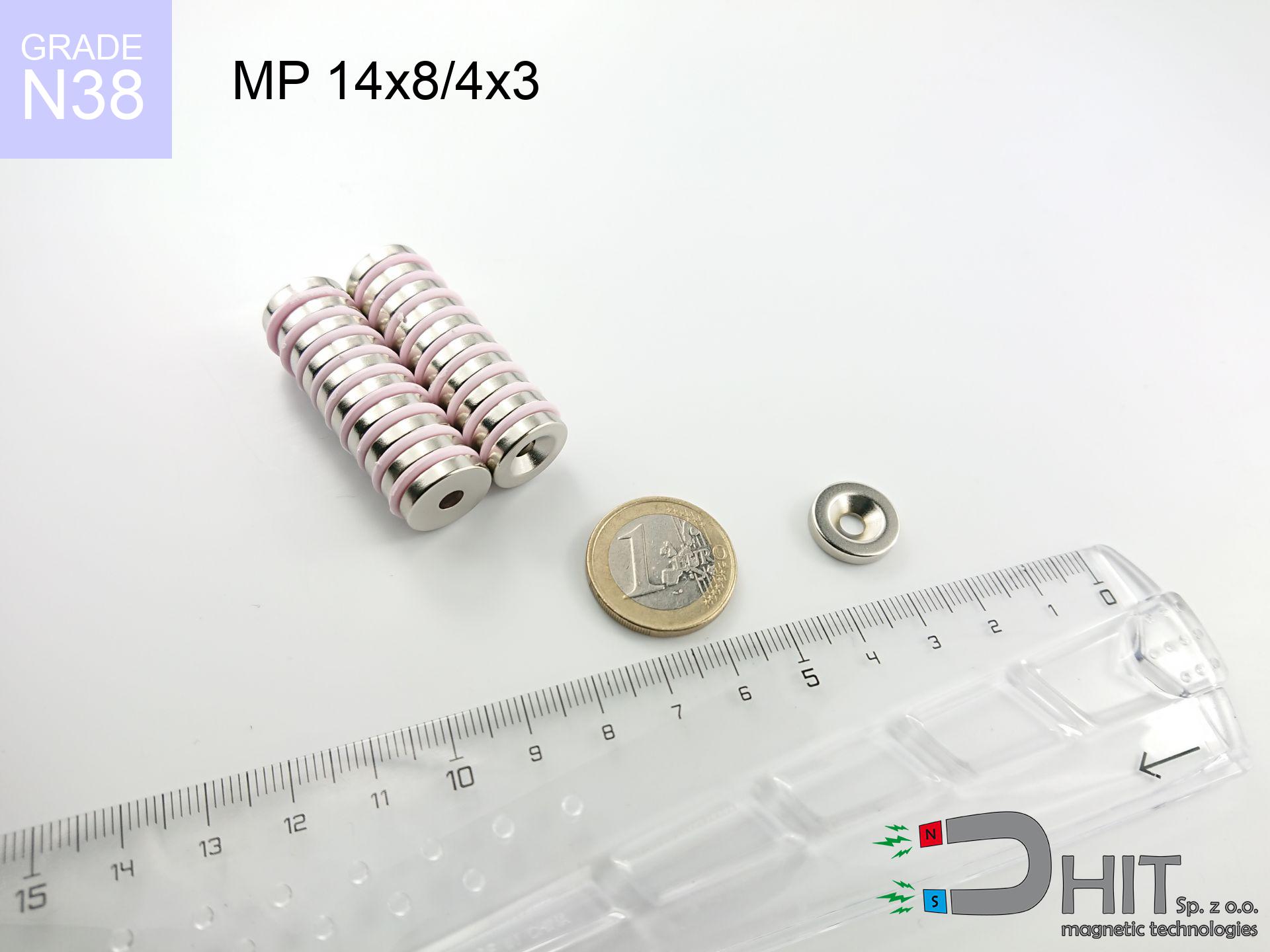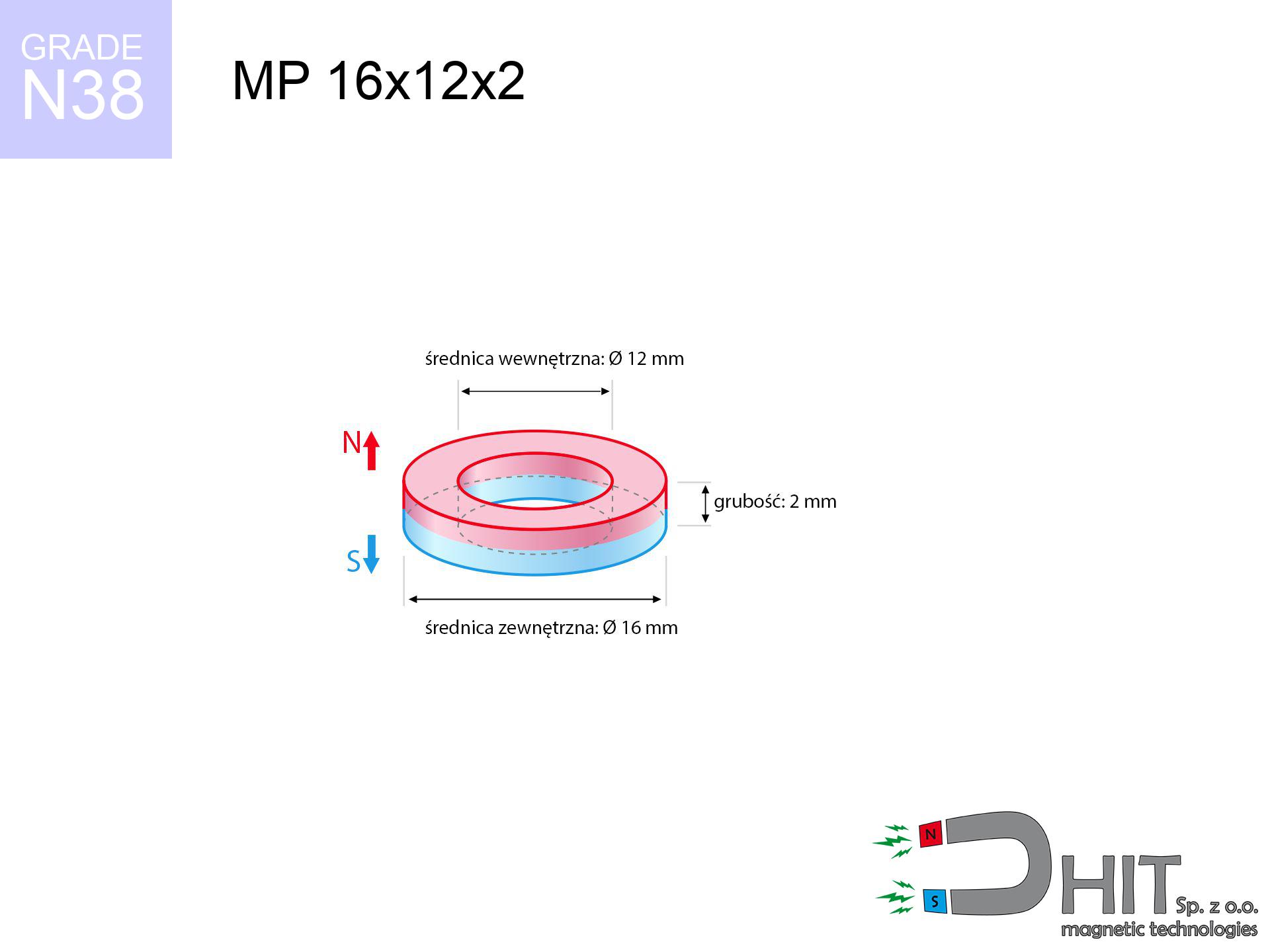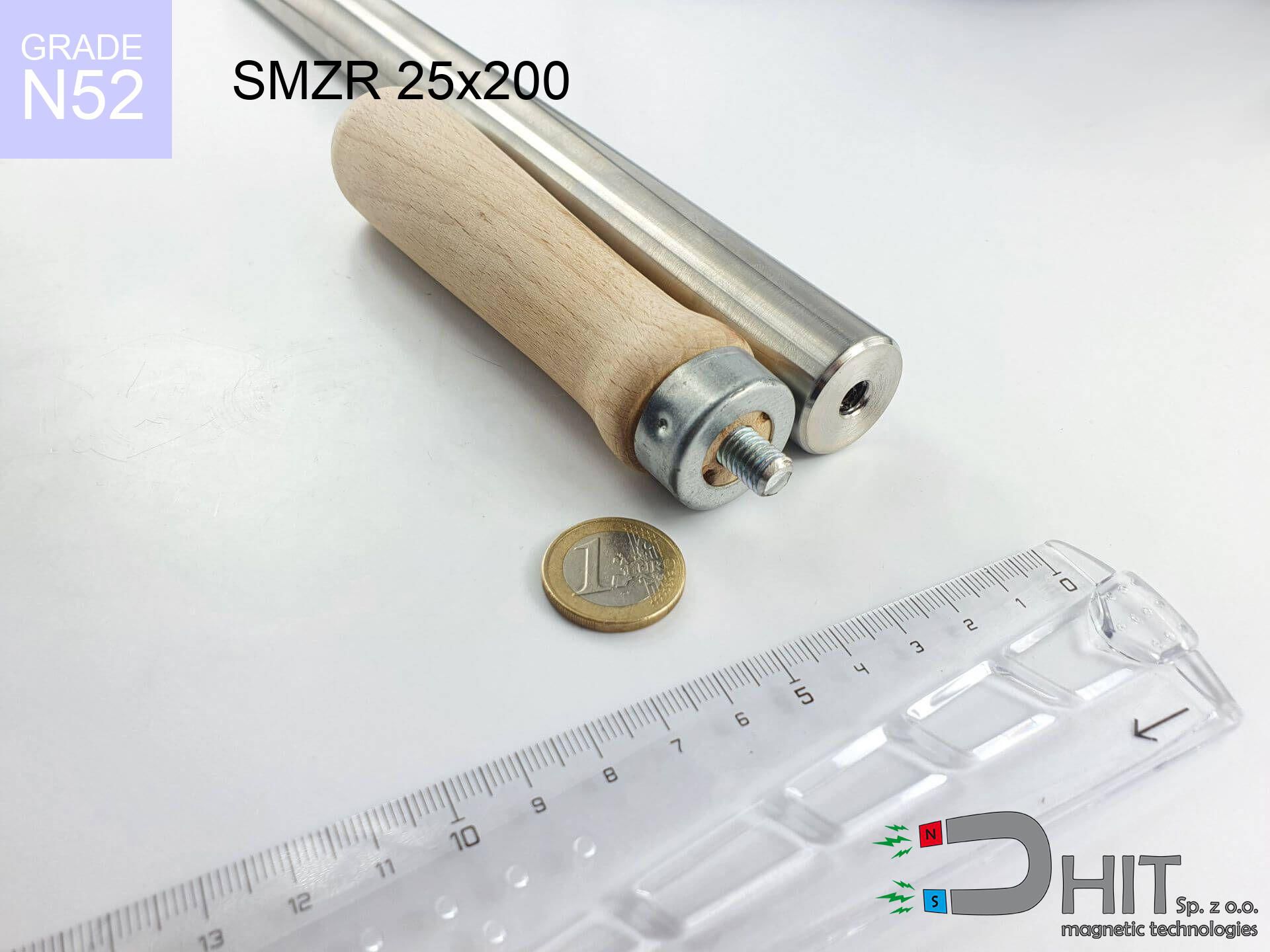UMS 32x10.5x5.5x8 / N38 - conical magnetic holder
conical magnetic holder
Catalog no 220329
GTIN: 5906301814191
Diameter Ø [±0,1 mm]
32 mm
cone dimension Ø [±0,1 mm]
10.5x5.5 mm
Height [±0,1 mm]
8 mm
Weight
37 g
Magnetization Direction
↑ axial
Load capacity
25 kg / 245.17 N
Coating
[NiCuNi] nickel
12.09 ZŁ with VAT / pcs + price for transport
9.83 ZŁ net + 23% VAT / pcs
bulk discounts:
Need more?Need help making a decision?
Give us a call
+48 888 99 98 98
if you prefer send us a note by means of
form
through our site.
Strength and structure of neodymium magnets can be analyzed on our
online calculation tool.
Same-day shipping for orders placed before 14:00.
UMS 32x10.5x5.5x8 / N38 - conical magnetic holder
Magnetic properties of material N38
Physical properties of NdFeB
Shopping tips
Advantages and disadvantages of neodymium magnets NdFeB.
Apart from their notable holding force, neodymium magnets have these key benefits:
- They have stable power, and over nearly 10 years their attraction force decreases symbolically – ~1% (in testing),
- They are very resistant to demagnetization caused by external magnetic sources,
- Thanks to the shiny finish and gold coating, they have an visually attractive appearance,
- They exhibit elevated levels of magnetic induction near the outer area of the magnet,
- They are suitable for high-temperature applications, operating effectively at 230°C+ due to advanced heat resistance and form-specific properties,
- With the option for tailored forming and precise design, these magnets can be produced in multiple shapes and sizes, greatly improving application potential,
- Important function in advanced technical fields – they serve a purpose in HDDs, electric motors, diagnostic apparatus as well as sophisticated instruments,
- Relatively small size with high magnetic force – neodymium magnets offer strong power in small dimensions, which makes them ideal in miniature devices
Disadvantages of magnetic elements:
- They may fracture when subjected to a heavy impact. If the magnets are exposed to external force, they should be placed in a protective enclosure. The steel housing, in the form of a holder, protects the magnet from damage while also reinforces its overall strength,
- They lose magnetic force at high temperatures. Most neodymium magnets experience permanent reduction in strength when heated above 80°C (depending on the form and height). However, we offer special variants with high temperature resistance that can operate up to 230°C or higher,
- Magnets exposed to humidity can rust. Therefore, for outdoor applications, we recommend waterproof types made of coated materials,
- The use of a protective casing or external holder is recommended, since machining internal cuts in neodymium magnets is restricted,
- Possible threat due to small fragments may arise, in case of ingestion, which is important in the protection of children. It should also be noted that miniature parts from these products may complicate medical imaging once in the system,
- High unit cost – neodymium magnets are costlier than other types of magnets (e.g., ferrite), which increases the cost of large-scale applications
Best holding force of the magnet in ideal parameters – what contributes to it?
The given lifting capacity of the magnet represents the maximum lifting force, assessed in a perfect environment, that is:
- using a steel plate with low carbon content, serving as a magnetic circuit closure
- having a thickness of no less than 10 millimeters
- with a refined outer layer
- with zero air gap
- with vertical force applied
- in normal thermal conditions
Determinants of lifting force in real conditions
The lifting capacity of a magnet depends on in practice the following factors, according to their importance:
- Air gap between the magnet and the plate, since even a very small distance (e.g. 0.5 mm) can cause a drop in lifting force of up to 50%.
- Direction of applied force, because the maximum lifting capacity is achieved under perpendicular application. The force required to slide the magnet along the plate is usually several times lower.
- Thickness of the plate, as a plate that is too thin causes part of the magnetic flux not to be used and to remain wasted in the air.
- Material of the plate, because higher carbon content lowers holding force, while higher iron content increases it. The best choice is steel with high magnetic permeability and high saturation induction.
- Surface of the plate, because the more smooth and polished it is, the better the contact and consequently the greater the magnetic saturation.
- Operating temperature, since all permanent magnets have a negative temperature coefficient. This means that at high temperatures they are weaker, while at sub-zero temperatures they become slightly stronger.
* Holding force was checked on the plate surface of 20 mm thickness, when a perpendicular force was applied, however under parallel forces the lifting capacity is smaller. Moreover, even a slight gap {between} the magnet’s surface and the plate decreases the holding force.
Handle with Care: Neodymium Magnets
People with pacemakers are advised to avoid neodymium magnets.
Neodymium magnets generate very strong magnetic fields that can interfere with the operation of a pacemaker. This is because many of these devices are equipped with a function that deactivates the device in a magnetic field.
Keep neodymium magnets away from TV, wallet, and computer HDD.
Neodymium magnets generate intense magnetic fields that can destroy magnetic media such as floppy disks, video tapes, HDDs, credit cards, magnetic ID cards, cassette tapes, etc. devices. They can also destroy videos, televisions, CRT computer monitors. Remember not to place neodymium magnets close to these electronic devices.
Dust and powder from neodymium magnets are flammable.
Do not attempt to drill into neodymium magnets. Mechanical processing is also not recommended. Once crushed into fine powder or dust, this material becomes highly flammable.
If you have a nickel allergy, avoid contact with neodymium magnets.
Studies show a small percentage of people have allergies to certain metals, including nickel. An allergic reaction often manifests as skin redness and rash. If you have a nickel allergy, you can try wearing gloves or simply avoid direct contact with nickel-plated neodymium magnets.
Neodymium magnets are highly susceptible to damage, leading to shattering.
Neodymium magnets are fragile and will crack if allowed to collide with each other, even from a distance of a few centimeters. Despite being made of metal and coated with a shiny nickel plating, they are not as hard as steel. At the moment of connection between the magnets, tiny sharp metal fragments can be propelled in various directions at high speed. Eye protection is recommended.
Neodymium magnets are among the most powerful magnets on Earth. The astonishing force they generate between each other can surprise you.
Familiarize yourself with our information to properly handle these magnets and avoid significant swellings to your body and prevent damage to the magnets.
Neodymium magnets can demagnetize at high temperatures.
Despite the general resilience of magnets, their ability to retain their magnetic strength can be influenced by factors like the type of material used, the magnet's shape, and the intended purpose for which it is employed.
Neodymium Magnets can attract to each other, pinch the skin, and cause significant injuries.
Magnets will attract each other within a distance of several to about 10 cm from each other. Remember not to insert fingers between magnets or in their path when they attract. Magnets, depending on their size, are able even cut off a finger or there can be a significant pressure or a fracture.
Magnets should not be treated as toys. Therefore, it is not recommended for children to have access to them.
Neodymium magnets are not toys. You cannot allow them to become toys for children. Small magnets pose a serious choking hazard or can attract to each other in the intestines. In such cases, the only solution is to undergo surgery to remove the magnets, and otherwise, it can even lead to death.
Avoid bringing neodymium magnets close to a phone or GPS.
Strong fields generated by neodymium magnets interfere with compasses and magnetometers used in navigation, as well as internal compasses of smartphones and GPS devices.
Exercise caution!
So that know how strong neodymium magnets are and why they are so dangerous, see the article - Dangerous powerful neodymium magnets.









